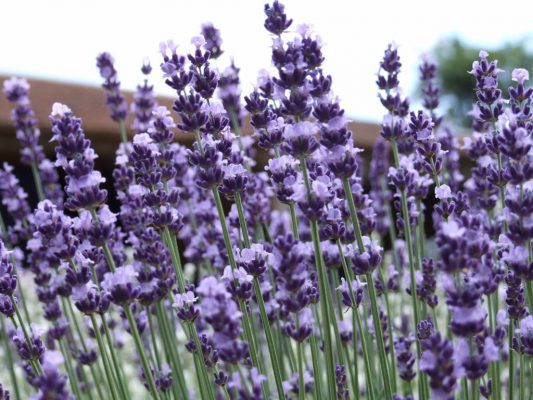
Learning Download: How to Grow Lavender
From Seed to Harvest: A beginner’s guide to growing lavender
Lavender is a beautiful flowering herb that produces purple flowers and leaves similar to rosemary. Although lavender leaves are not edible, its flowers are. Flowers are often dried and mixed into batters and the oil of the flower can be used for essential oils or to flavor icings. The herb is said to relieve stress. Lavender has blue-gray leaves and a very fragrant scent. Its stalks can be added to bouquets. In addition to its beautiful appearance and fragrant flowers, lavender also attracts pollinators to the garden. Many gardeners use lavender as an edging plant along borders or walkways.
There are two main different kinds of lavender — Spanish and English. English lavender is the most common and grows in long stalks. Spanish lavender grows on a perennial shrub.
To plant:
lavender should be planted outside after the last spring frost. You can also begin lavender inside and once the plants have their first set of leaves, transplant them to their final spot outside. However, if beginning inside, use a vermiculite mix instead of traditional potting mix to allow for better drainage.
When transplanting, space plants 12 inches apart in rows set 12 inches apart. Lavender also can grow in containers. If growing in a container, use a porous soil and don’t over-water.
To grow:
Lavender grows best in well-drained soil with a pH of 6.7 to 7.3. Add sand or limestone gravel to a bed to improve its drainage or plant the lavender in raised beds. Lavender thrives in hot weather, so be careful not to over-water as sodden soil can damage the plants. Many times, lavender plants are actually watered to death by gardeners trying to tend to the plant. Once the herb begins to bloom, remove the faded flowers to encourage more growth. Lavender is a perennial in some zones, so cut the dead branches back in the spring to prepare for the new season. Replace the plants every five years.
To harvest:
Since lavender thrives in hot weather, its flowers usually bloom mid-summer, in June or July. In warmer climates, blooming can last until the fall. If using lavender as a bouquet, harvest it before the buds have fully opened. Partially closed buds will keep their scent and color longer.
What lavender craves:
Once the plant begins to grow in the spring, side dress it with a 5-10-5 fertilizer but apply lightly. Lavender plants typically grow best in soil with poor nutrients. Over-fertilizing the plant can cause an excess in leaves and limited fragrant flowers. A more natural way to fertilize lavender is by placing an inch of compost around the plant. Do not fertilize the plant in the fall, a this will encourage new growth that will then be killed by the winter months.
Where to buy lavender seeds:
You can find different varieties of lavender seeds at Urban Farmer.

